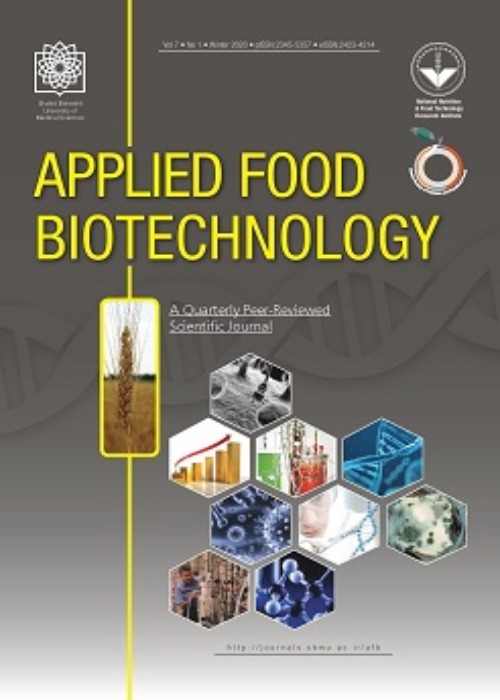Assessment of Phenolic Contents and Antioxidant and Antibacterial Activities of Extracts from Four Varieties of Iranian Date Palm (Phoenix dactylifera L.) Seeds
Author(s):
Article Type:
Research/Original Article (دارای رتبه معتبر)
Abstract:
Background and objective
Every year, large quantities of date palm seeds are produced as byproducts in date processing and packaging industries, which is discarded or used as low-value materials for animal feeds and composts. However, these bioresources may include potentials to produce high-value added products in food industries. The major aim of the current study was to assess phenolic profiles and contents and antioxidant and antibacterial activities of four Iranian date palm seed extracts, namely Zahedi, Kabkab, Mazafati and Rabbi.
Material and methods
Total phenolic contents, phenolic compounds profile and antioxidant and antibacterial activities of extracts from four Iranian date palm seeds were assessed using Folin-Ciocalteu, reversed-phase high-performance liquid chromatography, 2, 2-diphenyl-1picrylhydrazyl radical scavenging, agar disc diffusion and broth microdilution methods, respectively.Results and
conclusion
Total phenolic contents varied 1480-3380 mg GAE 100 g-1 dw. cinnamic, chlorogenic, caffeic and 3, 5-dihydroxybenzoic acid included the primary phenolic compounds, respectively. Of the varieties, Kabkab and Mazafati seed extracts with IC50 values of 16.56 and 22.6 µg ml-1 demonstrated the highest and lowest radical scavenging activity, respectively. Results obtained from disc diffusion method revealed that all extracts included inhibitory effects against Staphylococcus aureus, but not against Escherichia coli. Minimum inhibitory concentration and minimum bactericidal concentration of the extracts ranged 1.563.125 and 3.125-12.5 mg ml-1 for Staphylococcus aureus, respectively. Based on the findings, Iranian date seeds are good sources of extractable phenolic compounds with notable antioxidant activities, which can be used as natural additives in formulations of various products such as functional foods and dietary supplements. Furthermore, these seeds can be converted to value added products through biotechnological processes.Conflict of interest: The authors declare no conflict of interest.Keywords:
Language:
English
Published:
applied food biotechnology, Volume:6 Issue: 3, Summer 2019
Pages:
173 to 184
magiran.com/p1997817
دانلود و مطالعه متن این مقاله با یکی از روشهای زیر امکان پذیر است:
اشتراک شخصی
با عضویت و پرداخت آنلاین حق اشتراک یکساله به مبلغ 1,390,000ريال میتوانید 70 عنوان مطلب دانلود کنید!
اشتراک سازمانی
به کتابخانه دانشگاه یا محل کار خود پیشنهاد کنید تا اشتراک سازمانی این پایگاه را برای دسترسی نامحدود همه کاربران به متن مطالب تهیه نمایند!
توجه!
- حق عضویت دریافتی صرف حمایت از نشریات عضو و نگهداری، تکمیل و توسعه مگیران میشود.
- پرداخت حق اشتراک و دانلود مقالات اجازه بازنشر آن در سایر رسانههای چاپی و دیجیتال را به کاربر نمیدهد.
دسترسی سراسری کاربران دانشگاه پیام نور!
اعضای هیئت علمی و دانشجویان دانشگاه پیام نور در سراسر کشور، در صورت ثبت نام با ایمیل دانشگاهی، تا پایان فروردین ماه 1403 به مقالات سایت دسترسی خواهند داشت!
In order to view content subscription is required
Personal subscription
Subscribe magiran.com for 70 € euros via PayPal and download 70 articles during a year.
Organization subscription
Please contact us to subscribe your university or library for unlimited access!


